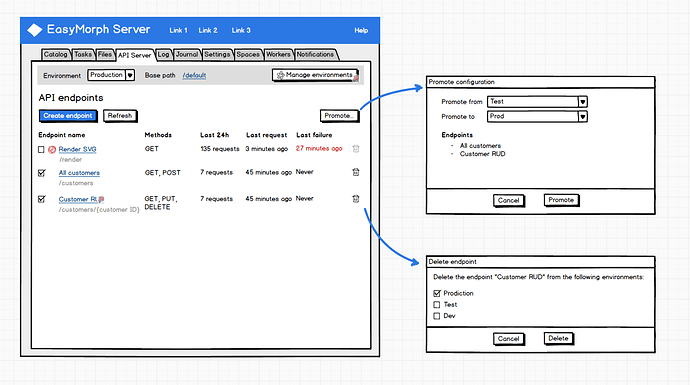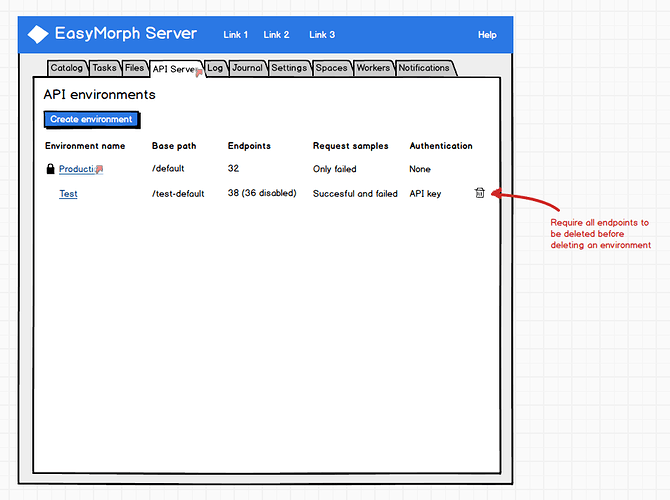In version 5.4 (planned for release in November) we will be introducing a new major capability of EasyMorph Server - custom API endpoints. You will be able to configure a custom API server and use EasyMorph workflows to process incoming HTTP requests from your internal (no-code or not) applications. Here is how it’s going to work:
-
New Server tab “API endpoints” is used to configure custom API endpoints - endpoint URL paths and EasyMorph projects that will process HTTP requests sent to the endpoints. Different modules of the projects handle different HTTP methods, one module per method. URL path segments can be automatically assigned to module parameters.
-
The modules that handle requests, must have the new “Incoming HTTP request” action. Request URL, query parameters, headers, and body will be returned by the action as columns. Request body (e.g. JSON) can be parsed and processed using regular EasyMorph actions.
-
An HTTP response is configured by another new action “HTTP response”. With the action, you can configure a response’s headers (including cookies) and body. Also, there will be response options for downloading a file or a URL redirect. Response body (e.g. JSON) can be constructed using regular EasyMorph actions.
-
Endpoints can employ authentication either via an API key or using the HTTP Basic authentication.
With this new capability, you will be able to rapidly design API endpoints for serving internal applications – various automations, no-code apps, system-to-system real-time integrations, etc.
We did preliminary tests and even before optimizations, the Server can process tens of HTTP requests per minute which should be sufficient for most internal purposes. In the future, we’re planning to optimize project execution startup time and increase request throughput by an order of magnitude.
UI mockups
List of endpoints
Endpoint properties
Questions? Suggestions?
UPDATE
Changed the version and estimated release date to 5.4 / November.




